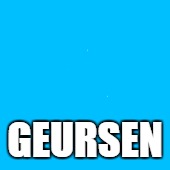
My previous blog explained the VMware Horizon Cloud Next-Gen – Images. In this blog, I will explain which steps you need to take to create a pool and how to add the pool to a pool group and entitle the group.
Pools
To create a pool you must have a published image. The pool will use the published image to create a group of VMs within the chosen provider.
Pool Groups
A Pool Group is, as the name suggests, a group of pools. The pool group can contain multiple pools on different edge deployments and can also contain pools of different VM sizes and workload profiles.
Creating a pool
To create a pool you will need to go to the Resources menu in the Horizon Universal Console and select Pools. In this example, I don’t have a Pool so I am getting some explanation on the pool and you will see the start button. Otherwise, you will see the pools and then you can select the Add button the create a pool.


- Click Start or Add to create a new pool.
- Provide a Pool name, the description is optional and choose the Pool Type. In this example, I choose Floating single-session.

- In the next section Desktops, you need to select or fill in the correct information under Destination, Images, VM Details, Machine Identity (Domain), Provisioning, and Properties.


- Under Networks you need to select the vnet and subnet which you want to use.

- Under VMware Dynamic Environment Manager you can select the UNC path towards the VMware DEM configuration if needed. In this example, I didn’t select any DEM configuration share.

- Click save and the pool creation will start.

Creating a Pool Group
Once the pool is created you can create a Pool Group direct after the Create Pool wizard. In this example I am going to use the Horizon Universal Console browse to Resources and select Pool Groups.

- Click start and select the Single-Session or Multi-Session Pool Group. I chose a single session in this example.
- Fill in the information: Name, Display Name (optional), Description (optional), and choose Pool Group type. In this example, the Pool Group type is a Floating desktop.

- Select the previous create Pool and click next.

- Under Policies, you will need to select or fill in the information for Client, Brokering, SSO, Power Management, and Timeout Handling. Click Save.


Entitlement
Once the pool group is created, users and groups can be entitled to use the resources that are configured. This action can be done directly after completing the Add Pool Group wizard or you can use the Horizon Universal Console to do it later on. In this example, I will use the Horizon Universal Console.
- Go to Resources in the Horizon Universal Console and select Pool Groups.
- Select the Pool Group were you want to add users and/or groups to and click on entitlement and click entitle.

- Select the desktops and/or applications to entitle and click next.

- In Users and User Groups use the search field behind Add users/user groups to search the user and/or group. In this example, I used a single account.

- Select the user to assign it to the Pool Group. Click Save.

After all these steps we have created pools, pool groups and entitled users to the pool groups. The user is now entitled to start using the W11 desktop we added to the pool.
Next
In the upcoming blogs, I will try to provide more information on how App Volumes and Dynamic Environment Manager integrate into Horizon Cloud Next-Gen.
If you have any comments, please let me know.

Leave a comment